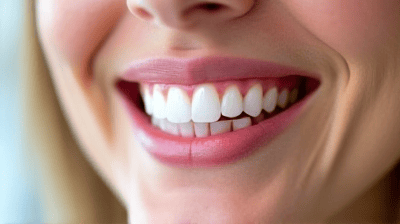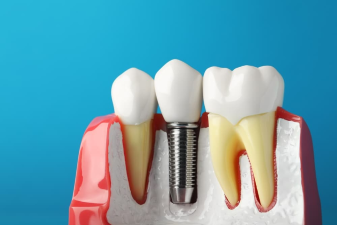Gum contouring is an increasingly popular dental procedure that enhances the appearance of the gums and contributes to an overall balanced smile. Whether due to genetics, gum disease, or other factors, uneven or excessive gum tissue can affect a person's aesthetic appeal and confidence.

Understanding Gum Contouring
What Is Gum Contouring?
Gum contouring, also known as gum reshaping or gum lifting, is a surgical procedure designed to improve the aesthetics of the gum line. The procedure involves removing excess gum tissue or reshaping the gums to create a more even and symmetrical appearance. It can be performed using several techniques, including traditional surgical methods and laser dentistry.
The Purpose of Gum Contouring
The primary goal of gum contouring is to create a healthy, aesthetically pleasing smile by adjusting the gum line. Here are some common reasons for undergoing the procedure:
- Excessive Gums: Individuals with “gummy smiles” may want to reduce the amount of visible gum tissue when they smile.
- Uneven Gums: Asymmetrical gum lines can detract from facial features. Gum contouring can help to create a more harmonious balance.
- Receding Gums: For some, gum contouring is necessary to treat receding gums, which can expose the roots of teeth and increase sensitivity.
- Restorative Dentistry: Gum contouring may be required before dental restorations, such as crowns or bridges, to ensure proper fit and placement.
Who Needs Gum Contouring?
While gum contouring can benefit many individuals, specific factors can determine whether a person is a suitable candidate for the procedure.
1. Aesthetic Concerns
People often seek gum contouring because of aesthetic issues related to their gum line. If you are unhappy with how your smile looks due to excessive or uneven gums, you may be a good candidate for the procedure. It can create a more balanced appearance, improving confidence and self-esteem.
2. Gum Disease
Individuals with gum disease may require contouring as part of their treatment. Gum disease can lead to gum recession or overgrowth of gum tissue, both of which can be addressed through contouring procedures. If you are experiencing active gum disease, it is crucial to consult a dental professional for proper diagnosis and treatment.
3. Receding Gums
Gum recession is a condition where the gum tissue pulls away from the tooth, often exposing the tooth root. This can lead to sensitivity, tooth decay, and aesthetic concerns. Gum contouring can help restore the gum line and protect exposed roots.
4. Overgrown Gums (Gingival Hyperplasia)
Certain medications, such as anticonvulsants, can cause gum overgrowth, a condition known as gingival hyperplasia. If your gums have become excessively thick due to medication or other factors, gum contouring might be an appropriate solution.
5. Dental Restorations
For individuals who are getting dental implants, crowns, or bridges, gum contouring may be required to create a suitable foundation for the restorations. Ensuring the gum line is even and healthy can help improve the overall results of restorative treatments.
The Gum Contouring Procedure
Pre-Procedure Consultation
The first step in the gum contouring process is a consultation with a qualified dentist or periodontist. During this appointment, the dental professional will:
- Assess your oral health
- Discuss your aesthetic goals
- Review your medical history
- Explain the benefits and risks of the procedure
- Discuss the technique that will be used, whether surgical or laser
Preparation for the Procedure
Before undergoing gum contouring, patients may be advised to:
- Avoid certain medications: Discuss all medications and supplements with your dental team. Some should be paused temporarily (e.g., blood thinners).
- Follow hygiene practices: Maintain excellent oral hygiene in the days leading up to the procedure to reduce the risk of infection.
- Arrange for transport: If sedation is used, patients should have someone available to drive them home after the procedure.
Gum Contouring Techniques
There are a couple of primary techniques used in gum contouring:
1. Surgical Gum Contouring
In traditional gum surgery, the dentist will:
- Administer local anesthesia to numb the treatment area.
- Use a scalpel to carefully remove excess gum tissue or reshape the gums.
- Stitch the gums as needed to promote healing.
This technique may require more recovery time, and stitches may be removed during a follow-up visit.
2. Laser Gum Contouring
Laser technology allows for a minimally invasive approach to gum contouring. The benefits of laser treatment include:
- Reduced bleeding: Laser treatment minimizes damage to surrounding tissues and leads to less bleeding during the procedure.
- Faster healing: Many patients experience quicker recovery times with laser surgery.
- Precision: Lasers provide accurate and controlled removal of gum tissue.
During laser contouring, the dentist will:
- Use a focused laser beam to remove or reshape gum tissue.
- Cause minimal disruption to surrounding tissues, promoting faster recovery.
Both techniques can produce excellent results, so discuss with your dentist which option may be best for you.

Recovery Tips After Gum Contouring
Proper recovery is essential for achieving the desired results from gum contouring. Here are some important recovery tips to follow:
1. Follow Post-Operative Instructions
Your dentist will provide specific post-operative care instructions that may include:
- Avoiding certain foods (hard, crunchy, or spicy) for a specified period
- Rinsing your mouth gently with saltwater to promote healing
- Taking prescribed pain medication if needed
2. Monitor for Complications
Be vigilant for any signs of complications, such as:
- Increased swelling or pain
- Bleeding that does not subside
- Signs of infection (e.g., fever, pus)
If you notice any concerning symptoms, contact your dentist immediately.
3. Manage Swelling and Discomfort
Swelling is a normal part of the healing process after gum contouring. To manage swelling and discomfort, consider these tips:
- Cold compress: Apply a cold compress to the exterior of your mouth for 15–20 minutes at a time during the first 24 hours.
- Over-the-counter pain relievers: Take non-prescription medications as directed to manage pain.
4. Maintain Oral Hygiene
Maintaining oral hygiene during recovery is crucial but do so with gentle care:
- Brush your teeth gently, avoiding the treated area.
- Rinse with a prescribed mouthwash, if recommended, to minimize the risk of infection.
5. Follow-Up Appointments
Attend all follow-up appointments scheduled by your dentist to monitor the healing process. These visits may involve checking on stitches, assessing gum health, or discussing any concerns you may have.
6. Lifestyle Modifications
Certain lifestyle modifications can support healing:
- Avoid smoking: Smoking can hinder the healing process and increase the risk of complications.
- Stay hydrated: Drink plenty of water and avoid overly hot or cold beverages.
Long-Term Care and Maintenance
After the recovery period, following good oral hygiene practices is essential for maintaining healthy gums and preventing future issues. Here are several long-term care tips:
1. Routine Dental Visits
Schedule regular check-ups with your dentist for cleanings and evaluations. Routine visits will help ensure that your gums remain healthy and that any issues are identified early.
2. Practice Good Oral Hygiene
- Brush your teeth twice a day with fluoride toothpaste.
- Floss daily to remove plaque and food particles from between your teeth and along the gum line.
- Use an antibacterial mouthwash to help reduce gum disease risk.
3. Address Gum Disease Early
If you notice any signs of gum disease, such as bleeding or swelling in your gums, seek dental care promptly. Early intervention can prevent further complications.
4. Maintain a Healthy Diet
A well-balanced diet rich in nutrients can promote oral health. Foods high in calcium, vitamin C, and antioxidants can help support healthy gums and prevent disease.
5. Avoid Risk Factors
Limit or avoid habits that can adversely affect your gums, such as smoking and excessive alcohol consumption.
Conclusion
Gum contouring is a valuable procedure that can enhance your smile and restore confidence in those affected by uneven or excessive gum tissue. By understanding what gum contouring entails, who can benefit from it, and how to recover properly, you can approach the procedure with confidence.
If you are considering gum contouring, consult with a qualified dental professional to discuss your goals and determine the most appropriate treatment for your needs. With proper care, you can enjoy the benefits of a beautiful, healthy smile for years to come.



